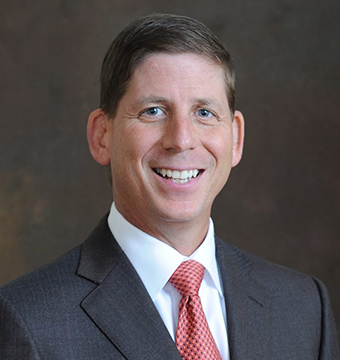
The following is adapted from Called to Care.
Imagine an after-dinner scene at a long-term care facility in Florida. A few dozen residents have gathered to play games, talk, watch television, and visit with family members. Suddenly, the peaceful scene is shattered when an eighty-nine-year-old man falls out of his wheelchair. In short order, staff members rush to assist, have him transported to the nearest hospital, and contact his children.
Over the next five days, the man makes only modest progress. However, on the sixth day, he comes out of his haze, eats a few bites of ice cream, and says a few words. This marks the beginning of a return to health. Hospital personnel share the exciting news with his children, who travel to the hospital from their disparate locations and gather around their father. More milestones quickly ensue.
Two days later, the man returns to the long-term care facility. Upon arrival, staff members ask detailed questions about his time at the hospital. Upon hearing about his initial achievements, they follow up with positive comments like, “That must have felt great! Can you tell me more?” Healthcare specialists pick up this line of questioning as well as the attendant enthusiasm the next day.
Without knowing it, these individuals showed their support in one of the most impactful ways possible. And in doing so, they certainly accelerated the man’s recovery. As a healthcare provider, there is one simple—but powerful—way you can show support for your patients and improve their outcomes: give active constructive responses to their good news.
The Importance of Capitalization and Active Constructive Responses
Capitalization is the process of telling another person about a personal, positive event, thereby deriving additional benefit from it. When you tell someone your good news, you get to enjoy it all over again, and you also get to enhance your connection with the people to whom you’re telling your story. Basically, you get more bang for your story’s buck.
As healthcare practitioners, we have to be careful when a patient relates good news to us. It is very easy for us to accidentally squash their enthusiasm and miss an opportunity to have them capitalize on their success. We get so caught up in diagnoses, treatments, and procedures, it’s easy to downplay others’ good news. Thankfully, it is also very easy to encourage them.
Let’s say, for instance, that a patient reports positive news to you. She tells you that since her last appointment, she went for a mile-long walk with her spouse. You have four ways that you could, in theory, respond to this good news:
- “Great! That has got to make you feel super! Tell me about the walk, was it in your neighborhood?” This would be something known as active constructive responding or enthusiastic support.
- “That’s great! Let’s go ahead and get this physical therapy session started.” This is passive constructive or quiet, understated support. (Single words like “nice,” “great,” and “cool” are also passive.)
- “Oh my, be careful! That’s progress, but you might not be able to do that next time—especially with the type of injury you have.” This is known as active destruction or simply quashing an event.
- In this case, you just totally ignore your patient and move on to a new activity in a new session. This is known as passive destructive.
According to well-documented studies by Shelly Gable and her colleagues, the only response that positively correlates with commitment, satisfaction, intimacy, trust, and relationship quality is active construction.
When you passively construct, you not only fail to help the patient capitalize but you also decrease commitment, satisfaction, intimacy, trust, and the quality of the relationship because you have not really engaged with the patient in a resonant way.
Be Ready to Be Active
In healthcare, there are endless opportunities to respond to patients’ good news. For example, in nursing and primary care, patients talk about their accomplishments in terms of their psychological well-being, mood, affect, and sleep quality. In rehabilitation settings, patients often talk about their physical accomplishments, like walks, lifting abilities, work, exercises, improved ability to work a few hours, and even the ability to sit up and watch a movie.
Within the context of a clinical visit, on days when people communicated their positive events to others, they experienced greater positive affect and satisfaction with life, above and beyond the importance of the event itself. Perhaps more importantly, the patient’s clinical improvement is facilitated, and patients are comfortable returning to this environment if a new or recurrent problem occurs as well as when they recount to their family, friends, and coworkers their overall experience with the clinic and the practitioner.
So that you are ready…here are a few phrases to keep in your repertoire that actively construct and enhance your relationship, drive commitment, and trust:
“Wow! That’s incredible! Tell me about it!
“That had to make you feel wonderful today!”
“That’s fantastic! How did that make you feel?”
“I am so proud of your accomplishment! How do you feel about it?”
“Your hard work and diligence is paying off! What do you think?”
Don’t fail to capitalize on your patient’s good news; make it even by giving them an active constructive response that deepens your connection, increases their positive emotions, and strengthens your patient-practitioner relationship.
It’s Part of Your Job to Facilitate Capitalization
Healthcare practitioners should take mindful advantage of capitalization opportunities whenever possible by not just listening to a patient recount their positive experience, but facilitating them to share it and experience it a second time.
In this way, patients are actively participating in their own recovery, which switches their relationship with their healthcare provider from one of dependence to one of equals. In this respect, the provider that takes advantage of capitalization is not mindlessly defaulting to the role of “fixer” in the relationship, but a mutual environment is assured, and further progress is enabled.
So, the next time you hear, “Oh, I’m so excited! I was able to walk an additional fifty feet today!” you might consider responding, “Wow! That’s incredible! Tell me about it! That had to make you feel wonderful today!” Capitalize on your patients’ good news.
For more advice on active constructive responses, you can find Called to Care on Amazon.
